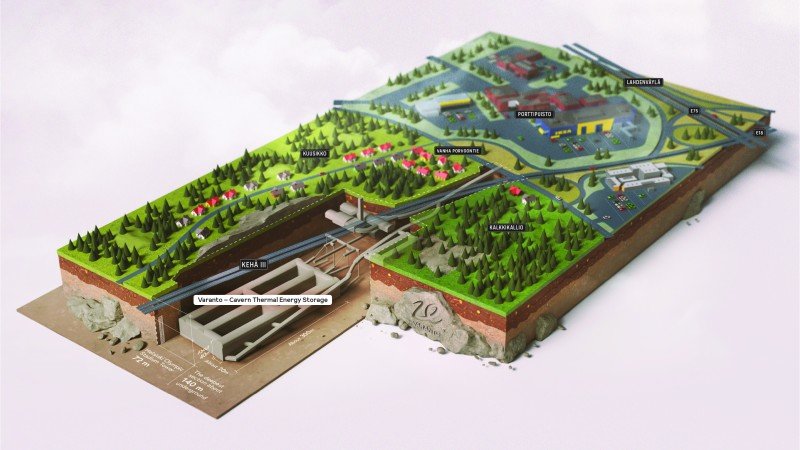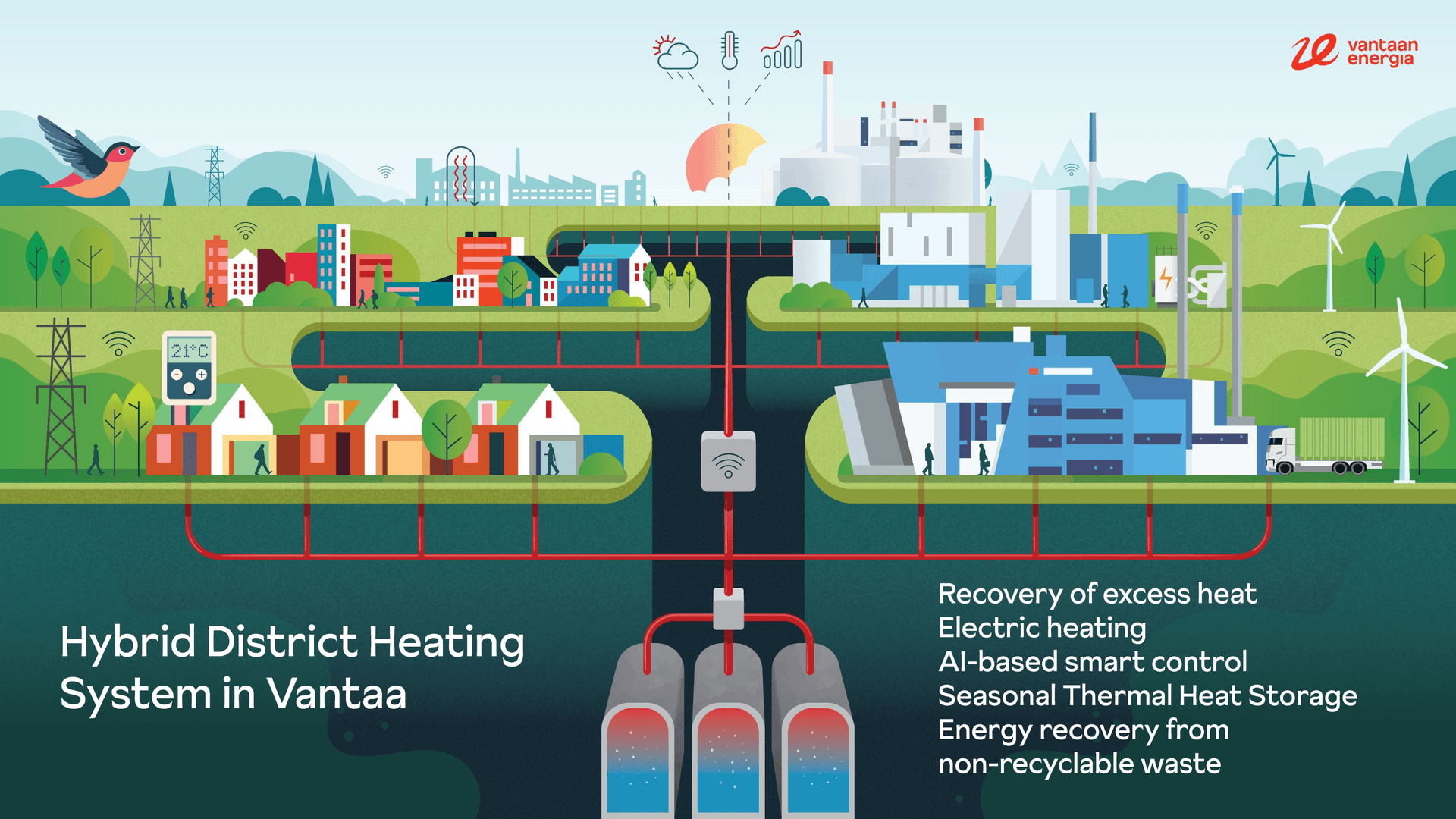Facts about the Varanto project
Varanto Energia is building a seasonal thermal energy storage facility in Vantaa, Finland. Upon completion of construction in 2028, the Varanto seasonal storage will be the largest in the world by all standards:
- Physical volume: Total volume of 1,100,000 cubic meters, including technological facilities - almost twice the size of Madison Square Garden.
- Heat capacity: 90 gigawatt-hours – corresponds to the annual heat consumption of an average Finnish city.
Economic value of the project: about 200 million euros


The principle of operation of the Varanto seasonal storage device
In Finland and other Scandinavian countries, the consumption of thermal energy varies considerably between seasons. Heat consumption in the summer is only one-tenth of the peak consumption in the cold winter months. The ability to store cheap and environmentally safe waste heat in underground storage is a revolutionary innovation from the point of view of the energy transition.
The principle of operation of the Varanto seasonal thermal energy storage device consists in the accumulation of heat from the environment, waste heat of buildings, heat from data centers, etc. in underground storages. This heat will then be used to heat buildings through the district heating network when needed.

What does the Varanto seasonal storage unit consist of?
The seasonal thermal energy storage will consist of three tanks with a width of about 20 meters, a length of 300 meters and a height of 40 meters. The bottom of the storage will be 100 meters below ground level. The capacity of the tanks is huge: their total volume, including technological facilities, is 1,100,000 cubic meters. Storage tanks will be filled with hot water. A pressure will be created inside the storage tank, allowing the water to reach temperatures of up to 140 degrees without the water boiling or evaporating.

Together with Varanto, two 60 MW electric boilers will be built. These boilers will be used to generate heat from renewable electricity when electricity is available in excess and cheap. Thanks to Varanto's intelligent control, electricity production, waste heat and district heating, the city of Vantaa will receive a hybrid heating system that will allow to take full advantage of different energy sources.
The total thermal capacity of a fully charged Varanto seasonal thermal energy storage is 90 gigawatt-hours. This power could heat a medium-sized Finnish city for a whole year. This amount of stored thermal energy is equivalent to, for example, 1.3 million car batteries could heat a medium-sized Finnish city for a whole year. The use and distribution of stored heat is ideal for a centralized network to which most facilities are automatically connected.
District heating networks are a popular heat transfer system in Finland and the Scandinavian countries.
Centralized heating is by far the most popular type of heating for buildings and houses in Finland. This became possible thanks to the underground heating network, to which most objects are connected. The city of Vantaa has over 600 kilometers of underground district heating networks. About 90% of Vantaa residents live in houses with centralized equipment.
Finland is an international pioneer in the production and use of district heating. By population, Finland is the largest producer of district heating in the Scandinavian countries. Heat produced at local thermal power plants is used for heating individual homes, commercial buildings and industrial production enterprises. In 2023, 37.3 terawatt-hours of heat were produced in Finland. Of these, 53% was generated from renewable heat sources, and 14% from waste heat.
In networks of centralized heat supply, thermal energy produced at production enterprises is transferred to consumers as hot water in a closed two-pipe network of centralized heat supply. In these pipelines, hot water flows to the buildings, and the water, which has released its heat, is returned to the production shop to be reheated. Heat is always transferred to the building through heat exchangers, so the water of the centralized heating itself does not circulate in the heat networks of buildings.
Central heating is an environmentally sustainable option for several reasons. One of the advantages of district heating is that it is produced on site, close to heat consumers. Thermal energy flowing through the district heating network is as environmentally friendly as the forms of production connected to it. New methods of thermal energy production and innovative technologies can be integrated into the centralized network, making them highly adaptable.
Varanto project cost estimate and implementation schedule
The project, which costs about 200 million euros, is financed by Vantaa Energy, but has already received an investment grant of 19 million euros from the Ministry of Economy and Employment of Finland. The beginning of the construction of the entrance to the storage is expected in the summer of 2024, and the seasonal thermal energy storage can be operational as early as 2028.
Джерело: https://www.vantaanenergia.fi/
